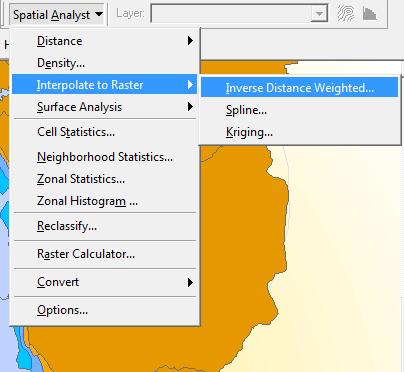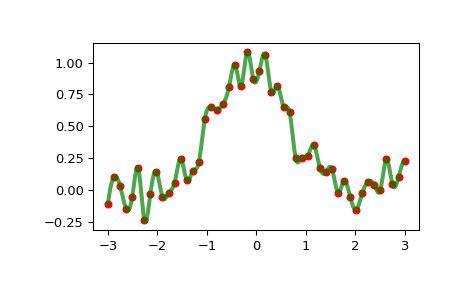

- Interpolate numpy raster x y z install#
- Interpolate numpy raster x y z driver#
- Interpolate numpy raster x y z code#
dtype, crs = proj, transform = transform, ) as new_dataset : new_dataset.
Interpolate numpy raster x y z driver#
open ( filename, mode = "w", driver = "GTiff", height = Z. scale ( xres, yres ) # Export array as raster with rasterio. translation ( min_x - xres / 2, min_y - yres / 2 ) * Affine.
Interpolate numpy raster x y z code#
Next, we’ll prepare the data for geoprocessing (click the + below to show code cell).ĭef export_kde_raster ( Z, XX, YY, min_x, max_x, min_y, max_y, proj, filename ): '''Export and save a kernel density raster.''' # Get resolution xres = ( max_x - min_x ) / len ( XX ) yres = ( max_y - min_y ) / len ( YY ) # Set transform transform = Affine. read_file ( "./_static/e_vector_shapefiles/sf_bay_counties/sf_bay_counties.shp" ) # Rainfall measurement "locations" # Source: # Modified by author by clipping raster to San Francisco Bay Area, generating random points, and extracting raster values (0-255) to the points rainfall = gpd. # Load data # County boundaries # Source: counties = gpd. Remote Sensing Coordinate Reference Systems Window Operations with Rasterio and GeoWombatĥ - Accessing OSM & Census Data in Python Point Density Measures - Counts & Kernel Density Proximity Analysis - Buffers, Nearest Neighbor Raster Coordinate Reference Systems (CRS) Vector Coordinate Reference Systems (CRS) Output_raster.GetRasterBand(1).PyGIS - Open Source Spatial Programming & Remote SensingĢ - Nature of Coordinate Systems in Python Output_raster.SetProjection( srs.ExportToWkt() ) # Exports the coordinate system to the file Srs.ImportFromEPSG(3010) # This one specifies SWEREF99 16 30 Srs = osr.SpatialReference() # Establish its coordinate encoding


Output_raster.SetGeoTransform(geotransform) # Specify its coordinates Output_raster = gdal.GetDriverByName('GTiff').Create(raster_ut,ncols, nrows, 1 ,gdal.GDT_Float32,) # Open the file, see here for information about compression: #zi = il.griddata((x, y), z, (xi, yi),method='linear') #(may use 'nearest', 'linear' or 'cubic' - although constant problems w linear) # Otherwise, try Method 2 - Interpolate using scipy interpolate griddata # PLEASE NOTE! Method 1 fails sometimes and then using mpl_toolkits.natgrid may be a solution () () Zi = ml.griddata(x,y,z,xi,yi,interp='nn') #interpolation is 'nn' by default (natural neighbour based on delaunay triangulation) but 'linear' is faster (see )
Interpolate numpy raster x y z install#
PLEASE NOTE! THIS FAILS QUITE OFTEN () But there might be a solution - install mpl_toolkits.natgrid () # Method 1 - Interpolate by matplotlib delaunay triangularizatio and nearest neigh. # Interpolate the values of z for all points in the rectangular grid # Generate a regular grid to interpolate the data. X,y,z = np.loadtxt(fil_in, skiprows=1, delimiter=" ",unpack = True) #CHANGE HERE Raster_ut = r"""/PathToFile/RasterOut.tif""" #CHANGE HERE Import scipy.interpolate as il #for method2, in case the matplotlib griddata method failsįil_in = r"""/PathToFile/FileName.xyz""" #CHANGE HERE To import xyz data from an ascii file, interpolate and save as geotiff Solution 4: Python and matplotlib # -*- coding: utf-8 -*. Or IDW) out of your delimited text layer (or use Raster-Analysis-Grid Then use "Interpolation" plugin to create a raster (from TIN a hillshade (in this case geotiff) isĪlso nice, you may do it for all the laz files in a directory.Īdd your xyz ascii file as a vector layer by "add delimited text Then create a dem from the laz file, in this case Visualizing a LiDAR point cloud in 3D with GRASS?įirst convert the ascii xyz data into a las file (compressed. With datasets as large as tens of billion of points (705GB in a single R.in.xyz is designed for processing massive point cloud datasets, forĮxample raw LIDAR or sidescan sonar swath data. The user may choose from a variety of statistical The r.in.xyz module will load and bin ungridded x,y,z ASCII data intoĪ new raster map. Hydrography includes not only bathymetry, but also the shape and features of the shoreline the characteristics of tides, currents, and waves and the physical and chemical properties of the water itself. Variations in sea-floor relief may be depicted by color and contour lines called depth contours or isobaths.īathymetry is the foundation of the science of hydrography, which measures the physical features of a water body. In the same way that topographic maps represent the three-dimensional features (or relief) of overland terrain, bathymetric maps illustrate the land that lies underwater. The term "bathymetry" originally referred to the ocean's depth relative to sea level, although it has come to mean “submarine topography,” or the depths and shapes of underwater terrain.


 0 kommentar(er)
0 kommentar(er)
